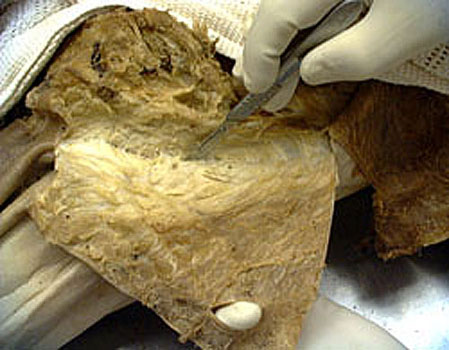
 |
| Skinning is an exercise in patience and perseverence. Care must be taken to avoid damaging the underlying delicate structures, such as named nerves, veins, and arteries. There are two commonly used methods of skinning. The first involves removing the true skin only, leaving behind the fat or superficial fascia. Then the fat is removed piecemeal using a dental cotton tool or tissue forceps perserving the delicate anatomical structures. This technique is useful in dissecting complex areas such as the posterior or anterior triangles of the neck. When skinning less complex areas, such as the back, it is wise to skin down to the deep fascia (the glistening sheet of connective tissue which covers individual muscles or groups of muscles) "establishing a plane" between fat and muscle. In both cases a sharp scalpel is a must. You will find that when skinning the back you will have to change blades every ten minutes or so. Also a dull scalpel is dangerous as more pressure is needed and slips may occur. Use a button-hole ( a small slit in the skin into which a finger is inserted ) to help hold and pull the skin away from the muscle as you carefully slice through the thin connective tissue strands that fasten superficial fasia to deep. |